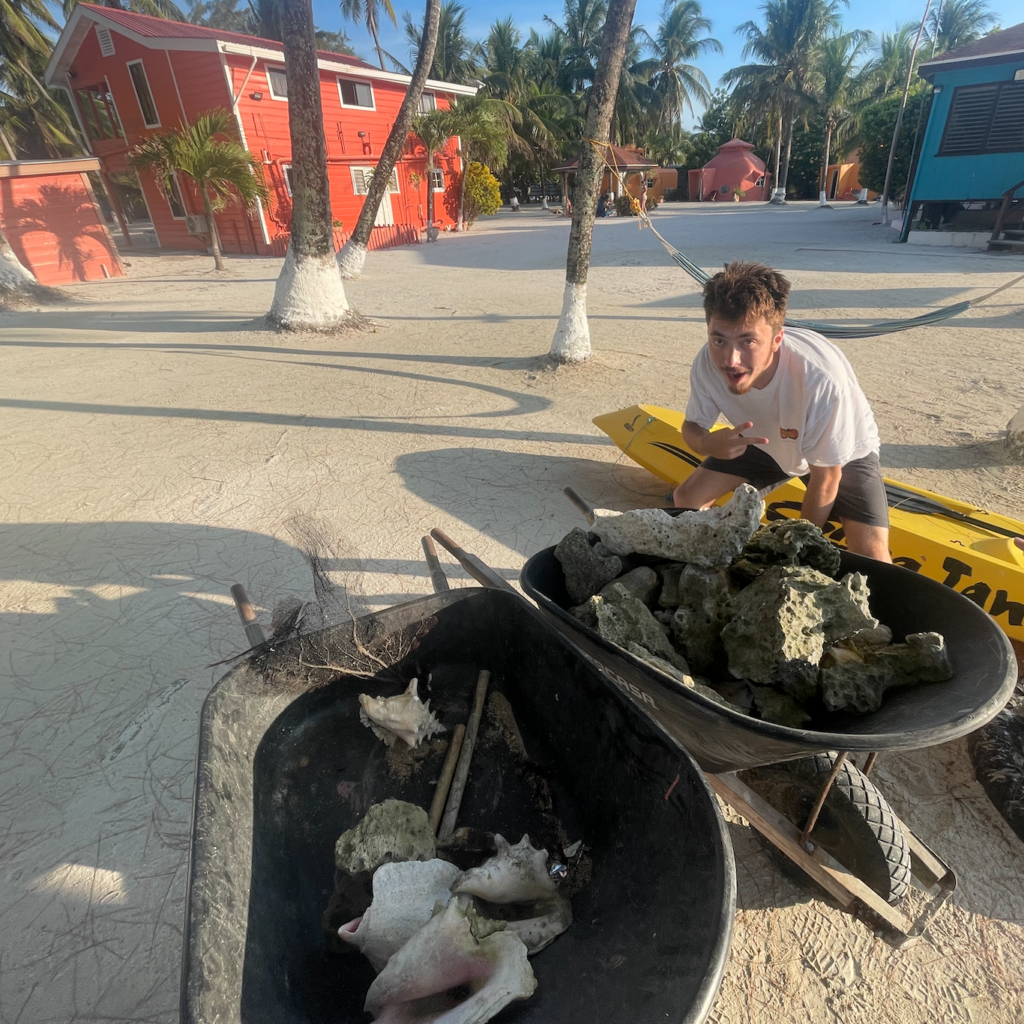
There was a variety of research projects to participate in on our trip to Belize. There was a “Plastics Team” that recorded quantities of microplastics in the water near several islands. “Team Parrotfish” conducted research on the behavioral and eating patterns of juvenile and adult parrotfish. There was a “Trash Team” (my favorite team name by far) that collected trash on the wrack line of different islands and compared their findings to the current in the gulf to determine from where the trash was coming. However, the team I had my heart set on was the artificial reef-building team. As an engineering major, this research project stood out to me, and was encouraged by our professor for any engineering students on the trip. There were five of us that decided to take on “Team Build.” After a few brainstorming sessions, we decided to build essentially four different reefs, two made of synthetic material and two of natural materials with one of each placed in two different depths. We decided on two hypotheses for our project: first, we would see a greater quantity of species visit our natural reefs and second, our deeper reefs would have more biodiversity. Our methods included gathering materials, building the reef in desired locations, and monitoring the reef 4 times a day to record species. In the photo, the wheelbarrows are full of the natural materials we collected from around South Water Caye and the kayak we used to carry them out to our deepest reef location. After the work was done, our findings proved that our deeper reefs were the most diverse. However, there was no evidence to support that species preferred natural materials over synthetic materials. I really enjoyed working on this project as well as getting to talk with locals in the eco-tourism industry about their thoughts on artificial materials.
